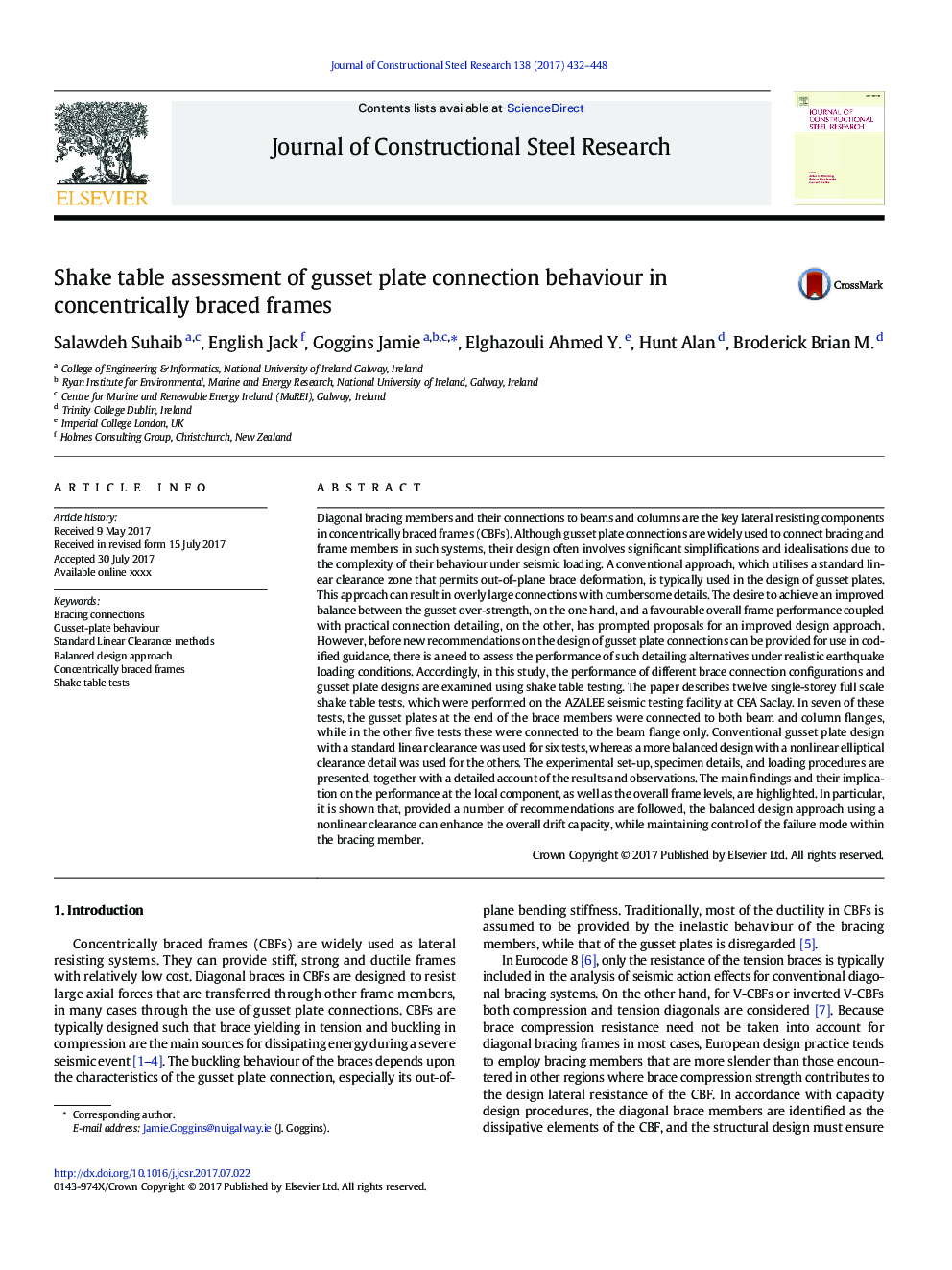| کد مقاله | کد نشریه | سال انتشار | مقاله انگلیسی | نسخه تمام متن |
|---|---|---|---|---|
| 4923327 | 1430692 | 2017 | 17 صفحه PDF | دانلود رایگان |
عنوان انگلیسی مقاله ISI
Shake table assessment of gusset plate connection behaviour in concentrically braced frames
ترجمه فارسی عنوان
ارزیابی جدول تکان دادن اتصالات ورق گالوانیزه در فریم های محکم
دانلود مقاله + سفارش ترجمه
دانلود مقاله ISI انگلیسی
رایگان برای ایرانیان
کلمات کلیدی
اتصالات پیوندی، رفتار گسل-صفحه، روش های استاندارد لیزر پاکسازی، رویکرد طراحی متعادل، قابهای متمرکزانه، تکان دادن تست میز
موضوعات مرتبط
مهندسی و علوم پایه
سایر رشته های مهندسی
مهندسی عمران و سازه
چکیده انگلیسی
Diagonal bracing members and their connections to beams and columns are the key lateral resisting components in concentrically braced frames (CBFs). Although gusset plate connections are widely used to connect bracing and frame members in such systems, their design often involves significant simplifications and idealisations due to the complexity of their behaviour under seismic loading. A conventional approach, which utilises a standard linear clearance zone that permits out-of-plane brace deformation, is typically used in the design of gusset plates. This approach can result in overly large connections with cumbersome details. The desire to achieve an improved balance between the gusset over-strength, on the one hand, and a favourable overall frame performance coupled with practical connection detailing, on the other, has prompted proposals for an improved design approach. However, before new recommendations on the design of gusset plate connections can be provided for use in codified guidance, there is a need to assess the performance of such detailing alternatives under realistic earthquake loading conditions. Accordingly, in this study, the performance of different brace connection configurations and gusset plate designs are examined using shake table testing. The paper describes twelve single-storey full scale shake table tests, which were performed on the AZALEE seismic testing facility at CEA Saclay. In seven of these tests, the gusset plates at the end of the brace members were connected to both beam and column flanges, while in the other five tests these were connected to the beam flange only. Conventional gusset plate design with a standard linear clearance was used for six tests, whereas a more balanced design with a nonlinear elliptical clearance detail was used for the others. The experimental set-up, specimen details, and loading procedures are presented, together with a detailed account of the results and observations. The main findings and their implication on the performance at the local component, as well as the overall frame levels, are highlighted. In particular, it is shown that, provided a number of recommendations are followed, the balanced design approach using a nonlinear clearance can enhance the overall drift capacity, while maintaining control of the failure mode within the bracing member.
ناشر
Database: Elsevier - ScienceDirect (ساینس دایرکت)
Journal: Journal of Constructional Steel Research - Volume 138, November 2017, Pages 432-448
Journal: Journal of Constructional Steel Research - Volume 138, November 2017, Pages 432-448
نویسندگان
Suhaib Salawdeh, Jack English, Jamie Goggins, Ahmed Y. Elghazouli, Alan Hunt, Brian M. Broderick,
